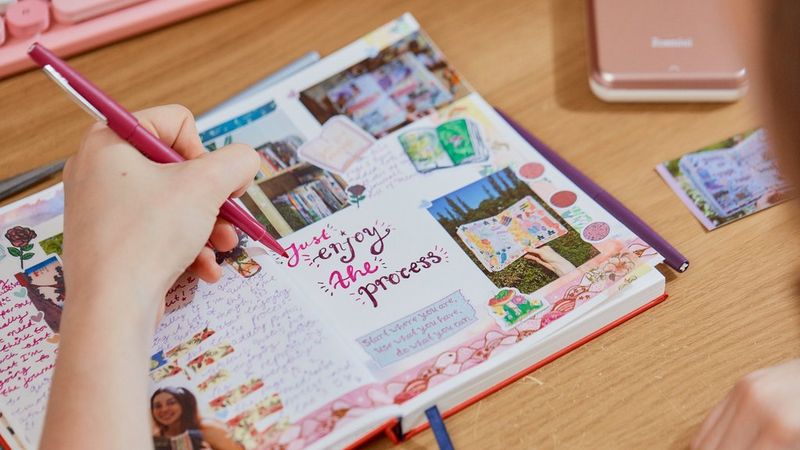
Welcome to 'Crafting Your Personalized Nutrition Chronicle: A Guide to Writing a Food Journal.'
This informative article provides evidence-based guidance on the art of keeping a food journal. By documenting your meals, snacks, and even your feelings and reactions to food, you will gain valuable insights into your dietary habits.
Discover how to identify patterns, make adjustments, and achieve a sense of freedom in your nutrition choices.
Let's embark on this transformative journey towards a more mindful and nourishing relationship with food.
Deciding What to Include in Your Food Journal
When considering what to include in your food journal, it is important to carefully select and record the relevant details of your daily dietary intake. This will help you gain insight into your eating habits and make informed decisions about your nutrition.
One key aspect to include in your food journal is the portion sizes of your meals. This information will give you a better understanding of how much you are consuming and can help you identify any patterns or areas where you may need to make adjustments.
Additionally, tracking your water intake is crucial for maintaining proper hydration and overall health. By recording the amount of water you consume throughout the day, you can ensure that you are meeting your daily hydration needs and make any necessary changes to improve your water intake.

Writing Down Every Meal and Snack
To ensure comprehensive documentation of your dietary intake, it is crucial to record every meal and snack in your food journal. This level of detail enables you to track your eating habits accurately and identify patterns or areas for improvement.
When writing down each meal and snack, consider the following:
Meal Planning:
Plan your meals in advance to ensure a balanced and nutritious diet.
Include a variety of food groups, such as fruits, vegetables, whole grains, lean proteins, and healthy fats.
Portion Control:
Pay attention to portion sizes and measure your food using measuring cups or a food scale.

Be mindful of serving sizes to avoid overeating and maintain a healthy weight.
Recording the Time of Your Meals
Accurate documentation of your dietary habits can be achieved by including the time of your meals in your food journal. Noting the time of your meals provides valuable insights into your eating patterns and can help you identify any potential issues or areas for improvement.
By recording the time, you can analyze if you are sticking to regular meal times or if you tend to skip meals or snack excessively. This information can also aid in understanding how meal timing affects your energy levels, digestion, and overall well-being.
Additionally, incorporating meal prepping and portion control into your journal can help you monitor the timing and size of your meals, ensuring that you are consuming balanced and nutritious portions throughout the day.
Taking note of the time of your meals adds an extra layer of detail to your food journal and enables you to make informed decisions about your dietary habits.
Noting Your Feelings and Reactions to Food
By including your personal thoughts and reactions to the foods you consume, you can gain a deeper understanding of how your emotions and experiences impact your relationship with food. Exploring emotional eating and understanding food cravings are essential components of this process.
When noting your feelings and reactions to food, consider the following:

- Emotional Eating:
- Identify emotional triggers: Pay attention to situations or events that lead to emotional eating episodes.
- Recognize patterns: Note any recurring emotions or feelings that are associated with certain types of food.
Understanding Food Cravings:
- Analyze nutrient deficiencies: Cravings can sometimes indicate a lack of specific nutrients in your diet.
- Mindful eating: Observe how your cravings change when you eat mindfully, paying attention to the taste, texture, and satisfaction of each bite.
Reviewing Your Journal for Patterns and Making Adjustments
Carefully reviewing your journal for patterns and making necessary adjustments is a crucial step in optimizing your nutrition and achieving your health goals.
By identifying triggers and modifying portion sizes, you can make informed choices that align with your desired dietary outcomes. One important pattern to look for is the presence of triggers that may lead to unhealthy eating habits. These triggers can be emotional, environmental, or even social. By identifying these triggers, you can develop strategies to avoid or cope with them, ultimately promoting healthier choices.
Additionally, reviewing your journal can help you identify patterns of portion sizes that may be contributing to overeating or inadequate nutrient intake. By modifying portion sizes, you can ensure that you are consuming appropriate amounts of food, which is key to maintaining a balanced diet and achieving your health goals.
Frequently Asked Questions
How Do I Track the Nutritional Content of the Meals and Snacks I Consume?
Tracking the nutritional content of meals and snacks is essential for maintaining accuracy and reliability in assessing one's diet. Using a food tracking app provides numerous benefits, such as convenient data entry and access to comprehensive nutritional information.
Should I Include Beverages in My Food Journal?
Including beverages in your food journal has both pros and cons. On one hand, it can provide a comprehensive view of your overall nutritional intake. On the other hand, accurately tracking the nutritional content of beverages can be challenging.
Is It Necessary to Record Portion Sizes in My Food Journal?
Portion control is a crucial aspect of maintaining a healthy diet. Recording portion sizes in your food journal is necessary to accurately track your calorie and nutrient intake. This ensures you have an evidence-based reference for making informed dietary choices.

How Do I Handle Situations Where I Eat Out or Have Meals Prepared by Others?
When eating out or having meals prepared by others, it is important to make mindful choices and practice portion control. Requesting nutritional information, choosing healthier options, and being mindful of portion sizes can help maintain a balanced diet.
Using a digital app or online tool to keep track of your food journal offers various benefits, such as convenience, ease of use, and the ability to access and analyze your data. Comparing different online tools can help you find the one that suits your needs.
 Writing TipsCreative WritingJournalingSketching TechniquesBuying GuidesPrivacy PolicyTerms And Conditions
Writing TipsCreative WritingJournalingSketching TechniquesBuying GuidesPrivacy PolicyTerms And Conditions
